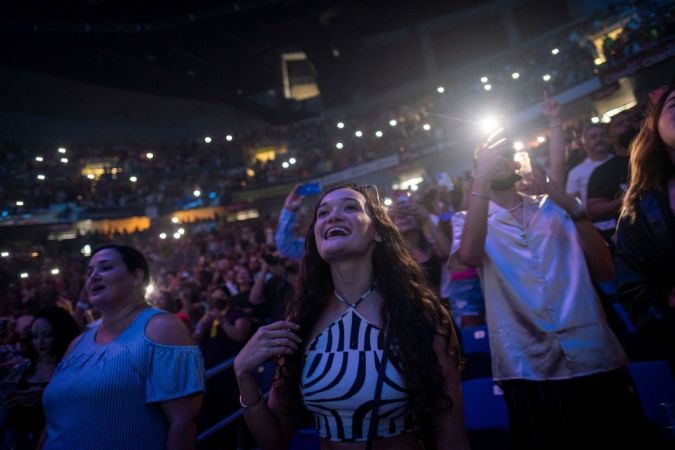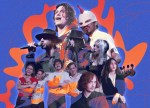In today’s music industry, achieving superstardom comes down to more than raw streaming numbers or platinum certifications. Now, there’s a whole new metric to judge artists by: Does your fanbase have a name (Beyhive, Beliebers)? Is your personal life buzzy enough for celebrity blind items? Does your latest single have everyone decoding it for hidden messages? Are you speaking out on the things that matter to your fans? Are you doing it correctly?
For many music artists, their popularity doesn’t just now come down to what they create or who they are, but who their fanbase wants them to be and the access they desire. This phenomenon has reprised the concept of “parasocial” relationships to the forefront of discussions in recent years, raising questions about fans’ expectations for their favorite artists and the boundaries that should exist in that dynamic.
As fans become more deeply invested in the lives of celebrities, a range of fan behaviors has come under scrutiny. From throwing objects on stage to online harassment and holding artists “accountable” for their dating choices or food preferences, these actions have prompted some artists to push back and set boundaries. Or, in Bad Bunny’s case, speak out during major performances. As he addressed his fans at this year’s Coachella, in response to criticism from a TIME interview, “You will never know me from Instagram, you will never know me from a viral video on TikTok, you will never know me from an interview.”
However, as one might believe, this evolving dynamic between fans and artists didn’t appear out of thin air. Gayle Stever, a professor of psychology at SUNY, has been studying fan behavior and parasocial attachment since the late ‘80s, immersing herself in fan communities for artists like Michael Jackson, Prince, and Madonna. To her, it’s not that the artist-fan relationship has undergone a drastic change; rather, certain aspects of it have become more apparent and accessible — thanks to social media.

“Honestly, everything I’m seeing today, I saw in the late ’80s and early ’90s,” Stever told Remezcla. “Certain kinds of social media have made direct interaction with a celebrity a little more possible, but it’s also made fan behavior a lot more visible.”

Jesús Triviño, a music executive at TIDAL, likens social media to a drug — it has its appeal because it establishes a connection between an artist and their fans and helps artists grow, but it also blurs reality. “At the beginning, you’re starting from zero, with your friends and family supporting you,” he said. “Once your numbers start going up, you’re getting more attention, but you’re also adding the anxiety of having more eyes on you.”
While having more eyes, followers, and likes can propel a talent’s career, it can also foster a sense of ownership among fan communities, especially with all the effort many put into outwardly supporting their favorites. Tefi Pessoa, a TikTok personality and pop culture commentator, believes the current dynamic has its roots in the early 2000s when shows like TRL and American Idol gave regular viewers the power to “choose” the next big star or influence the charts. Social media’s ability to serve as a launching pad for new artists only amplified that feeling.

That perception of power — flawed as it may be — had left some fans with a sense of entitlement. “Any time somebody does anything wrong now, there’s almost this sense of ‘Don’t forget that we made you,'” she said. “There comes a point in someone’s success where they’re no longer human. They represent an idea of a person. As with Bad Bunny dating Kendall Jenner, there’s this feeling from people in, ‘We supported him so much, and look how he repays us.'”
The Puerto Rican artist’s dating life has been a major point of contention among his fans ever since he started dating Jenner. Jennifer Mota, a Dominican-American journalist and public scholar, points out that while Bad Bunny had a history of dating white (including white Latina) women, fans actually took issue with him dating Jenner because of what her family represents. “Their history of dating men of color and monetizing off of the culture, it’s been really upsetting for a lot of women and female fans,” she shared.
Having worked in various corners of the music industry, Mota noted that it’s more than just about ownership. Fans increasingly expect artists to align with their morals and values, especially among Gen-Z audiences. This expectation has led to discussions of “listener responsibility,” where fans feel compelled to support artists who share their beliefs. “Are we going to help certain artists monetize when they’re irresponsible in the way they move through society?” she noted. “At the end of the day, so much music is created through survival, through resistance. It’s created in response to what’s going on around us, so all of this goes hand in hand. I see how fans would want to know what their favorite artists believe in.”

Still, Mota acknowledges that this thinking can lead fans to overstep or come down too hard on artists. A recent example is Yahritza y Su Esencia, the emerging music sensation in the Mexican regional space, who faced intense criticism from fans after voicing their food preferences, resulting in a wave of harassment, racist bullying, and people calling their Mexican heritage into question. Since then, many have pointed out how disproportionate the response was, especially given the nature of the comments and the fact that Yahritza is only 16 years old.
“Any time somebody does anything wrong now, there’s almost this sense of ‘Don’t forget that we made you'”
Pessoa adds that this heightened scrutiny can overwhelm artists and make overcoming past mistakes or perceived slights challenging. She noted, “No matter how famous you are, you have to learn lessons for yourself. You have to go through relationships, disappointments, trials, and tribulations just like everybody else, but this added pressure of who we want someone to be is too much.”
And while Mota points out that our awareness of mental health issues has increased, the scale of social media and the amount of eyes on any given mistake makes it hard for artists and their fans to approach conversations with nuance. “We’re in a time where [artists] might be facing more criticism compared to [those] back in the day,” she said. “A single TikTok can spark conversations between millions of people, and if you’re an artist, you’re putting yourself through that, seeing comments, and it does take a toll.”

There’s a sense in pop culture today that celebrities should be open, that they should manage an impossible balancing act of being aspirational but still self-aware. Activists but not too political. And, above all, thankful to their fans — something that’s made it difficult for them to set boundaries.
“Artists are damned if they do, damned if they don’t, but they also need fans to feel close to them in order [for them] to continue to support them,” Pessoa said, though she also noted that this dynamic isn’t sustainable. And it won’t be long before we return to a pre-social media world where there’s an air of mystery between us and our favorite artists.
The evolving fan-artist relationship, fueled by social media and heightened expectations, has undoubtedly reshaped the music industry. While fans’ desire for alignment with their values is a driving force, it’s crucial to strike a balance that respects artists’ boundaries and personal lives. We must question whether we’re allowing them to grow and evolve while maintaining their connection with their audience. In an era where we’re getting tours of celebrities’ homes on YouTube and paparazzi sharing their last locations, Pessoa emphasized, “There’s no necessity to know people that way.”





